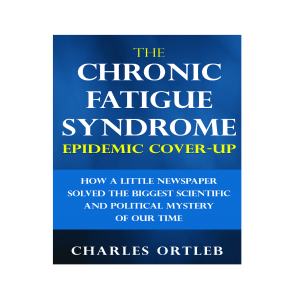

From Perplexity A.I.
A close look at the facts about Kaposi's Sarcoma may cause a major shift in the AIDS PARADIGM.
If autopsy studies—such as those reported by George Hensley—found that nearly all AIDS patients show internal Kaposi's Sarcoma (KS) lesions, yet not all such patients test positive for HHV-8 (Human Herpesvirus 8), this discrepancy fundamentally challenges the prevailing theory that HHV-8 is the sole and necessary causal agent for KS in AIDS.
Evidence from Autopsy Studies
Hensley's team found KS-like lesions in about 95% of AIDS autopsies, far exceeding the clinical diagnosis rate and implying KS is almost universal internally among AIDS patients.
These autopsies revealed a broad morphologic spectrum and inflammatory variants of KS present in nearly all risk groups, independent of external symptoms.
HHV-8 Positivity is Not Universal
The scientific literature overwhelmingly associates HHV-8 with most cases of KS, detecting viral DNA in a majority of lesions.
However, case reports and pathology studies document KS-like tumors in HIV-positive patients that are negative for HHV-8 by immunohistochemistry—a finding dubbed “atypical spindled endothelial proliferation,” with classic histologic and clinical features still matching KS.
This existence of HHV-8-negative KS challenges the central paradigm tying KS causation strictly to HHV-8, especially when these lesions are indistinguishable from those found in HHV-8-positive patients.
Implications for the Role of HHV-8
If widespread KS lesions occur in AIDS patients regardless of HHV-8 status, it raises questions about the sufficiency and necessity of HHV-8 for KS pathogenesis.
The data suggest that either:
KS can arise independently of HHV-8, possibly due to immune dysfunction, chronic inflammation, or exposure to other infectious or environmental agents, or
Current HHV-8 detection methods may miss variants or low-level infections, or that HHV-8 acts in concert with other pathogenic factors, not alone.
This challenges therapeutic and diagnostic practices that rely solely on HHV-8 as a biomarker or causal link and opens a line of inquiry: Are there alternative mechanisms or cofactors in KS development—particularly in the unique immunological milieu of AIDS?
Overall, the autopsy data and reports of HHV-8 negative KS suggest that the role of HHV-8 in Kaposi's Sarcoma—especially in the context of AIDS—is not as clear-cut or exclusive as often assumed. This demands a re-examination of KS pathogenesis in immunosuppressed populations and a more nuanced model that allows for multiple contributing factors.
More Episodes
All Episodes>>Create Your Podcast In Minutes
- Full-featured podcast site
- Unlimited storage and bandwidth
- Comprehensive podcast stats
- Distribute to Apple Podcasts, Spotify, and more
- Make money with your podcast


